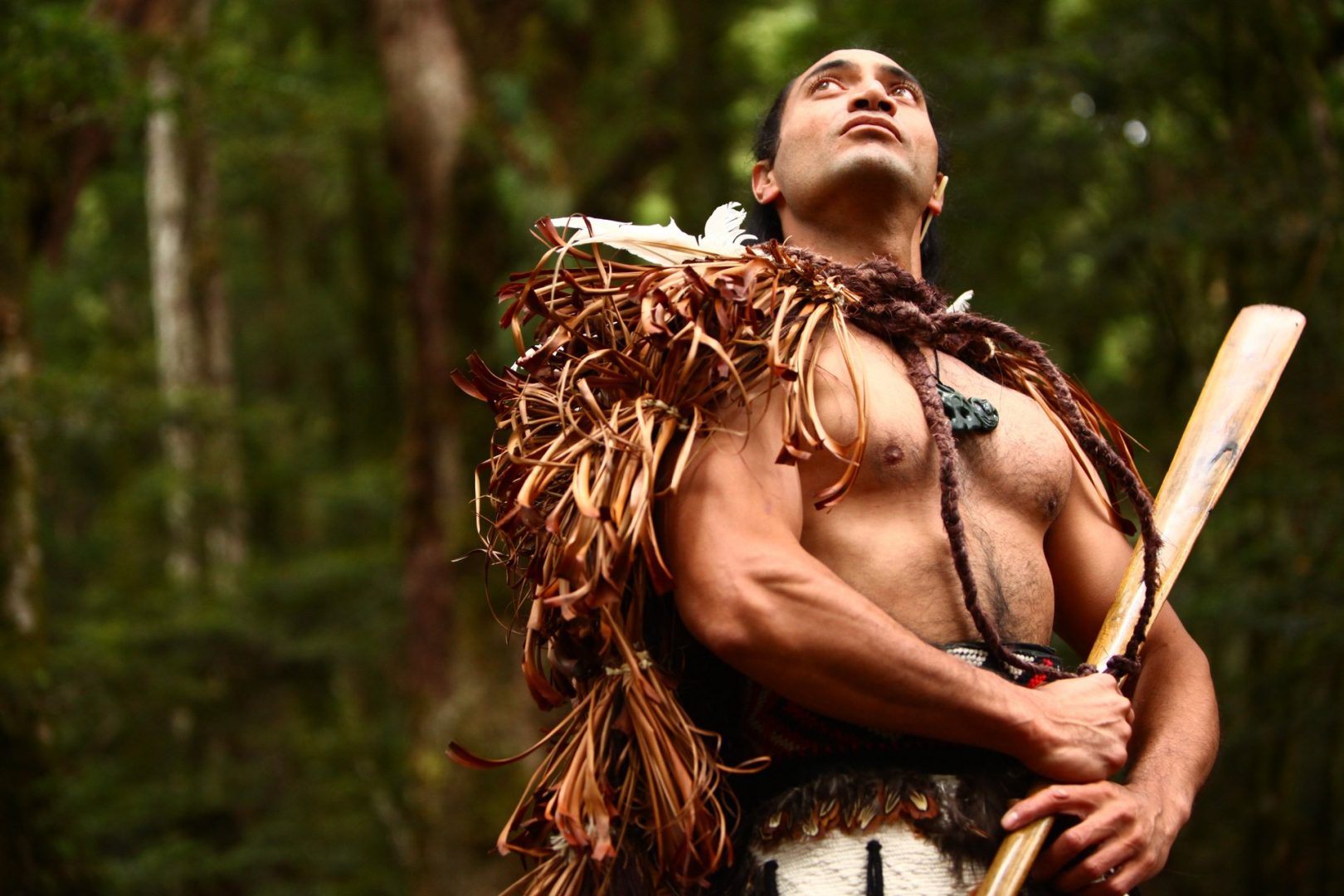Quận Whakatane là một khu vực trong vùng Vịnh Plenty, trải dài một phần bờ biển phía đông của vịnh và đến nội địa đến đồng bằng Rangataiki màu mỡ. Ngoài lĩnh vực nông nghiệp rộng lớn, sản xuất gỗ và các sản phẩm từ sữa chất lượng cao, cũng như kiwifruit, táo, và hải sản, huyện cũng là một trung tâm nhộn nhịp của di sản Maori. Các bãi biển cát, vùng đất thấp, đồi và ha bụi rậm của nó là nơi cư ngụ của bảy bộ lạc khác nhau, hoặc iwi.
Ngati Awa và Ngai Tuhoe là hai iwi nổi bật nhất có trụ sở tại quận Whakatane. Hầu hết các khu định cư Ngati Awa nằm trong đồng bằng Rangataiki, trong khi Tuhoe tập trung quanh khu rừng cao, đồi núi của vùng đất truyền thống của họ, Te Urewera. Nhiều thành viên của cả hai bộ lạc sống tại các trung tâm đô thị của huyện ở Whakatane-Ohope, Edgecumbe, và Murupara và duy trì liên kết chặt chẽ với tổ tiên bản địa của họ, hoặc whakapapa.
Lịch sử
Người Ngati Awa và Tuhoe iwi được cho là xuống từ Tiwakawaka, cháu nội của người đi biển huyền thoại, Maui, người thường được cho là đã phát hiện ra Aotearoa, vùng đất mà ngày nay được gọi là New Zealand. Các bộ lạc của Tiwakawaka kết hôn với nhau thành người Toi, như là thành trì của họ ở Kakahoroa, hiện nay là Whakatane, phát triển và mang các cộng đồng khác.
Người Mataatua waka, một xuồng di cư lớn, đã chở người dân Toroa đến các cửa sông Kakahoroa để định cư ở đó. Khi những người đàn ông buồn bã để gặp người bản xứ, những người phụ nữ bị bỏ lại để đối đầu với một cơn thủy triều mạnh mẽ đe dọa sẽ mang Mātaatua ra khỏi bờ. Mặc dù truyền thống của họ làm nản lòng phụ nữ đi biển, Wairaka, con gái của Toroa, đã thốt lên “E! Kia whakatane au i ahau” (“hãy để tôi hành động một phần của một người đàn ông”), mà tập hợp các phụ nữ xung quanh cô để chèo xuồng của họ trở về bờ. Whakatane được đặt tên theo lời tuyên bố anh hùng của cô.
Từ hậu duệ của Tiwakawaka, người Toi, và waka của thuyền trưởng Toroa, người Ngati Awa và Tuhoe nổi lên. Văn học dân gian Maori tuyên bố Awanuiarangi II thành lập bộ tộc cũ, trong khi bộ tộc sau này được đặt theo tên Tūhoe-pōtiki. Trong ngày nay, truyền thống miệng phong phú của nguồn gốc bộ lạc vẫn tồn tại.
Dân số
Điều tra dân số quốc gia năm 2013 đặt dân số Tuhoe ở mức 34.980, chỉ có 5.000 trong số đó chiếm các vùng đất tổ tiên của họ. Cùng một cuộc điều tra dân số đếm 16.179 cá nhân liên kết với Ngati Awa iwi. Trên một nửa số người dân Awanuiarangi sống tại các khu vực đô thị của Whakatane. Có nhiều người nói về te reo maori, ngôn ngữ Maori, ở Whakatane hơn so với trung bình quốc gia, do sự kết nối chặt chẽ của các dân tộc khác nhau với lịch sử của đất đai.
Kinh tế
Trong ngôn ngữ Maori, tinh thần vùng đất của Whakatane được gọi là mana khiua, và Ngati Awa và Tuhoe được coi là người quản lý trung thành của mana khiua. Với sự ra đời của công nghiệp hóa đã mang những pakeha, hay những người định cư châu Âu, hai bộ lạc đã có ảnh hưởng đáng kể trong việc bảo tồn môi trường tự nhiên và xã hội bản địa của họ. Ngôn ngữ và văn hóa ăn sâu trong cả xã hội đô thị và nông thôn, và cả trẻ lẫn già. Truyền thống tổ tiên, như tang lễ tangihanga, tụ họp marae, trưng bày đá tưởng niệm, và những cuộc phiêu lưu vào đất nước bụi rậm, vẫn chăm chỉ quan sát.
Với sự thành thạo của họ trên quê hương của họ, đầu vào từ hai iwi là rất quan trọng đối với nhiều hoạt động thương mại ở quận Whakatane, chẳng hạn như xác định khả năng sinh sản của đất, nghiên cứu hệ động thực vật bản địa, bảo tồn các địa điểm tangata quan trọng và nuôi dưỡng những người khác trong các giá trị te reo maori và Maori, chẳng hạn như quan hệ họ hàng, hòa hợp với thiên nhiên, và cạnh tranh thông qua các môn thể thao bộ lạc, tranh luận và khiêu vũ.
Các truyền thống, sự kiện, và nghệ thuật của hai iwi cũng đã thu hút sự quan tâm của địa phương và quốc tế. Các điểm tham quan quan trọng của bộ lạc bao gồm White Island, một hòn đảo núi lửa đang hoạt động, các Waka Mātaatua định cư trên trang web hạ cánh của nó tại Whakatane, các trang web pa khác nhau xung quanh huyện, và vườn quốc gia Te Urewera. Huyện cung cấp một loạt các quần xã sinh vật phong phú phục vụ du lịch và thăm dò. Đắm chìm vào cuộc sống của Ngati Awa và Tuhoe iwi đã trở thành một cơ hội thú vị cho nhiều du khách.

















































